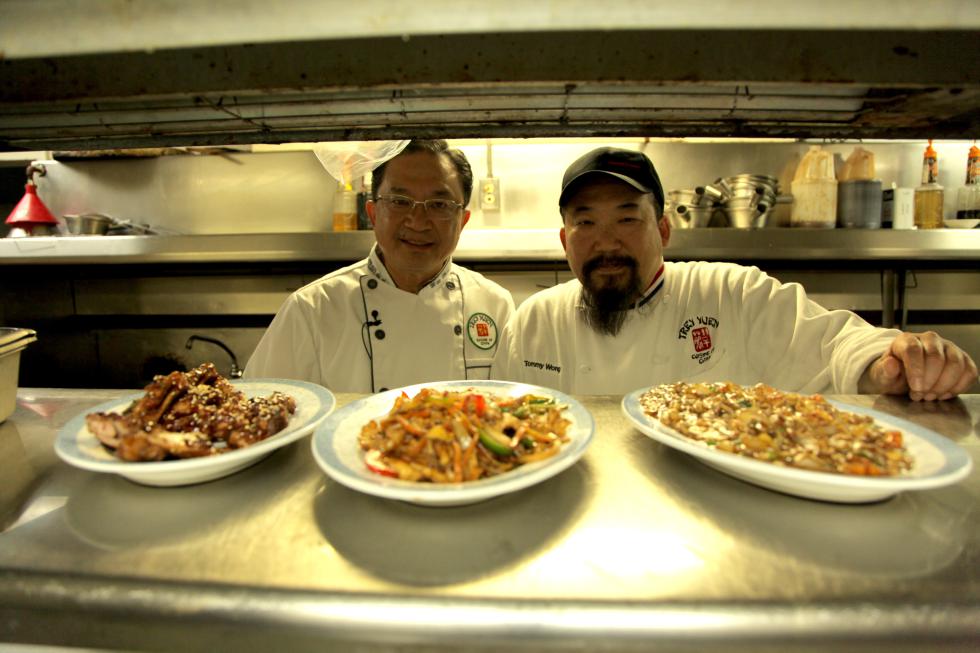Everyone with a go-to Chinese take-out joint is sure of one thing: theirs is the best. It’s a partisan game on a par with Left vs. Right or The Beatles vs. The Stones — I once witnessed, on a Brooklyn street corner, a heated argument about the neighborhood’s best place, something otherwise reserved for the almighty pizza. Once they’ve made their choice most people will never stray, and for many a big part of the initial taste test boils down to how well a place does a single dish: General Tso’s Chicken.
It hardly seems fair. The dish — chunks of jewel-red deep-fried chicken, coated in a spicy-sweet sauce and paired with broccoli — is a staple of Chinese-American restaurants, but probably, few would call it their specialty. Instead, it sometimes seems included by default — the fettuccine alfredo of the cuisine. And when it comes right down to it, there’s always that nagging question, even if it only comes between delicious mouthfuls: is this really a Chinese dish at all?
That is the question director Ian Cheney asked himself when he was making his earlier film King Corn. On the road in Ohio during the filming of that movie, he stopped in at a non-descript Chinese restaurant for dinner, where he ordered what he calls “the usual.” As he ate, he wondered: just who was General Tso? And how did we all end up eating his chicken? His film The Search For General Tso — playing this Wednesday at Amherst Cinema with a special live appearance by Cheney and his producer Amanda Murray — is the story of his search for answers.
The journey takes him from New York to Shanghai to the American Midwest, unfolding in a blend of immigrant tale and mystery. When he gets to Hunan Province, he finds that General Tso is everywhere, and while his name is attached to many things there — a museum, a giant memorial statue, and even something called General Tso’s Liquor — it is not a name linked to the famous chicken. Indeed, when he shows people photos of the famous dish, he is told that it looks more like frog than chicken. But if it didn’t come from General Tso, where did it come from?
The truth, of course, is far more complex and far more interesting, one tangled up in our own American history of racism and xenophobia, and what immigrants do to adapt and survive in a new land that is not always very welcoming. After seeing Cheney’s film, you’ll never look at that $5.95 lunch special quite the same way again.
Also this week, a reminder of some of the richness available online for streaming these days. First up is Jiro Dreams of Sushi, a remarkable documentary available to stream on Netflix, Amazon, and Google Play, among other outlets. It tells the story of Jiro Ono, an 85-year-old sushi chef who is often cited as the world’s best. While his restaurant was rated three stars by the Michelin guide, it is just as often mentioned for its unusual location: the 10-seat eatery is located inside a Tokyo subway station. Yet Ono’s artistry is such that sushi pilgrims call months in advance to snag a reservation at the bar. But Ono’s work ethic also makes life harder for his son Yoshikazu, a talented chef in his own right who may never be able to fully escape his father’s long shadow.
Also available online — currently free to stream via Hulu but also available for download via Vimeo and iTunes — is Griffin Hammond’s short documentary Sriracha, about Huy Fong’s hot chili sauce of the same name that has earned a slavishly devoted following (it has even traveled to the International Space Station). Like The Search for General Tso, the story of sriracha’s journey is a mix of immigrant tale — Huy Fong owner David Tran named his company after the boat that delivered him, penniless, to America from Vietnam in the 1970s — and traditional cuisines. Hammond’s half-hour film is more of a love letter than a deep history, but fans of the “rooster sauce” will enjoy a peek behind the scenes of their favorite flavor.•
Jack Brown can be reached at cinemadope@gmail.com.




